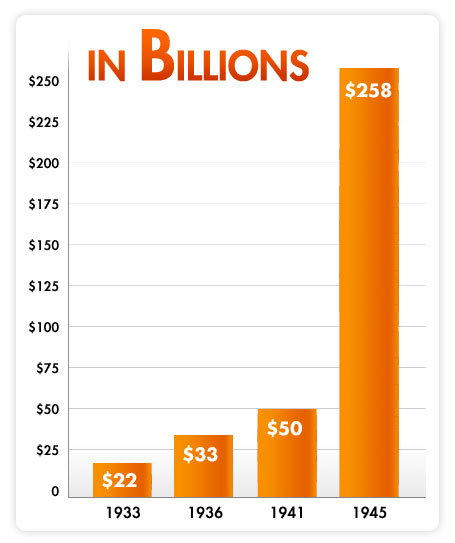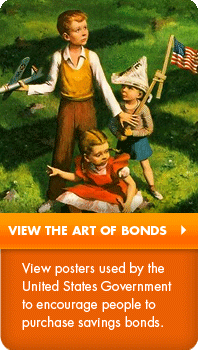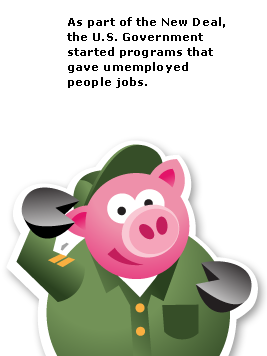
The New Deal (1933-1936) to World War II (1939-1945)
In 1932, Franklin Delano Roosevelt, who is also known as FDR, was elected President of the United States. He had a plan to help fix the problems with the U.S. economy. He called that plan the New Deal.
As part of the New Deal:
- The U.S. Government started programs that gave unemployed people jobs.
- As part of those projects, people built many public buildings and roads.
- Other New Deal programs helped raise the price of farmers’ crops and the animals they sold.
During the New Deal, changes were made to make the U.S. banking system more stable so banks would not go out of business without giving people their money back. The Federal Deposit Insurance Corporation (FDIC) was created. The FDIC:
- insured the money people put into a bank up to $5000
- prevented people from losing all their savings if a bank failed
The New Deal also changed the way businesses operated to help make sure people were paid more fairly. All the New Deal programs were paid for, and run by, the Government. This meant that the Government’s debt grew a great deal. The U.S. debt was $22 billion in 1933 and grew by 50 percent in the three years that followed, reaching $33 billion.
At the end of the 1930s, another world war was beginning. World War II involved most of the countries of Europe as well as the United States, Russia, Japan, and many colonies in Africa and Asia. It began when Nazi Germany invaded Poland, and became the most widespread war in history. More than 100 million members of the military from different countries were involved.
Taking part in this war was very expensive for the U.S. Not only did the U.S. pay for its own military, it also lent money to Britain and other countries fighting the German military. The estimated cost for the U.S. was $323 billion. To help pay for the war, the U.S. took on more debt, borrowing about $211 billion. Much of the debt was in the form of U.S. Savings Bonds, which were also called War Bonds at the time. The sale of the bonds was very successful. About 18 percent of the total U.S. debt for the war was funded by War Bonds. At the end of World War II, the Government’s debt had grown to more than $258 billion.

- 1932 - Franklin Delano Roosevelt (FDR) was elected the 32nd President of the United States.
- 1933 - The U.S. debt reached $22 billion.
- 1939 - World War II was beginning in Europe.
- 1941 - The United States enters into World War II.
- 1945 - By the end of World War II the Government's debt had grown to more than $258 billion.









